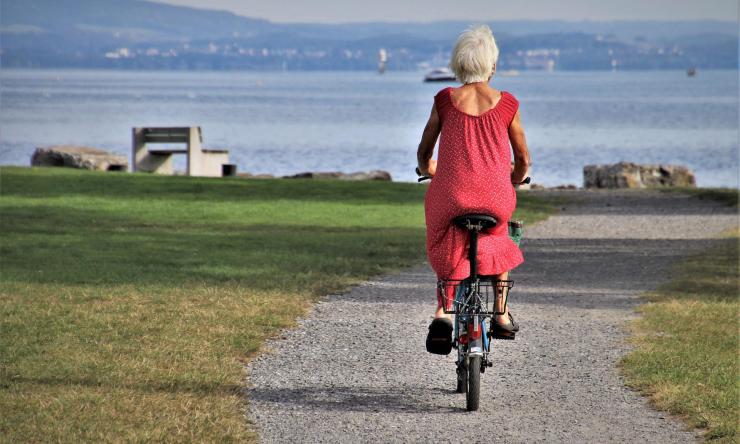Keep it moving: the importance of exercise for older adults
Physical activity at any age is crucial and can reduce the risk of different illnesses and chronic diseases. As people grow older, an active lifestyle becomes increasingly more important. No matter someone’s age, it’s never too late to start exercising. A Baylor College of Medicine geriatrician details the need for regular movement, especially among older adults.
“Think about the why. For many older adults, it is helpful to have a conversation about what they value, and often times that includes things like being independent and enjoying things in their life, which often requires being as mobile as possible,” said Dr. Angela Catic, associate professor of medicine – geriatrics and palliative medicine at Baylor. “If they want to remain as functional and independent as possible, exercise is typically an important part of how they can do that.”
Whether they enjoy going to their grandchild’s baseball game or being with other people, tying in exercise can motivate an older adult. Catic suggests older adults try merging their hobbies or activities they enjoy with movement. If they like to be with others, joining a walking group can be beneficial so they are social while being active.
A combination of cardiovascular exercise, strength training and flexibility is best when creating a fitness routine. For older adults, one of the easiest cardiovascular activities is walking, which can be done almost anywhere and requires no equipment other than supportive shoes. They can put on their shoes and take a walk in a safe, well-lit area if the temperature allows it. For less desirable climates, walking inside a mall is beneficial.
If someone has never done strength training before or has been more sedentary, Catic recommends checking with a provider before starting a new program. A physical therapist or trainer also can help find the best plan for them. Strength training can include light weight or bodyweight exercises and does not require heavy weights for a good outcome. Yoga or tai chi are important for maintaining flexibility, and tai chi can help reduce falls.
“Most of us will have aches, pains and limitations by a certain age, so working with a physical therapist who can account for those and offer a customized exercise program can often be helpful,” she said. “If that isn’t needed, work with a trainer at a gym or look for an exercise class geared toward older adults.”
Individuals with neurological issues causing balance problems or who have balance issues for other reasons should speak with their clinician before starting an exercise plan. If someone has diabetic neuropathy or any cause of recurrent falls, avoid the treadmill as the moving belt can increase the risk of falls. Catic also advises against riding a bicycle, as that requires a lot of balance, unless the older adult has been biking regularly.
If an older adult has mobility issues or is new to fitness, seated yoga or Sit and Be Fit classes are beneficial and remove stability from the equation. If they have access to a pool, being in the water is helpful as there is less worry about balance, and painful joints are not an issue. Swimming, water aerobics or even pool walking is beneficial for balance and joint concerns.
“As we get older, it’s natural that our muscles are not as strong, which is known as sarcopenia. We can slow that with regular exercise,” Catic said.
Regular movement can reduce the risk of falling and frailty, help maintain weight, lower the risk of chronic diseases like heart disease and hypertension and improve control of diabetes. It can also help strengthen bones through weight baring exercises, reduce the risk of osteoporosis and fractures, improve energy levels and reduce anxiety and depression. Regular, moderate exercise helps reduce the risk of slow cognitive decline or dementia.
The CDC suggests 150 minutes of exercise per week for everyone, which is equivalent to about 30 minutes of exercise five days a week.
“It’s important to realize that if you haven’t been exercising, don’t start at 150 minutes a week – work up to it. You don’t need to do it in 30-minute chunks if your schedule doesn’t allow or that’s too much to start. You can take three 10-minute walks per day and build up from there,” Catic said.










